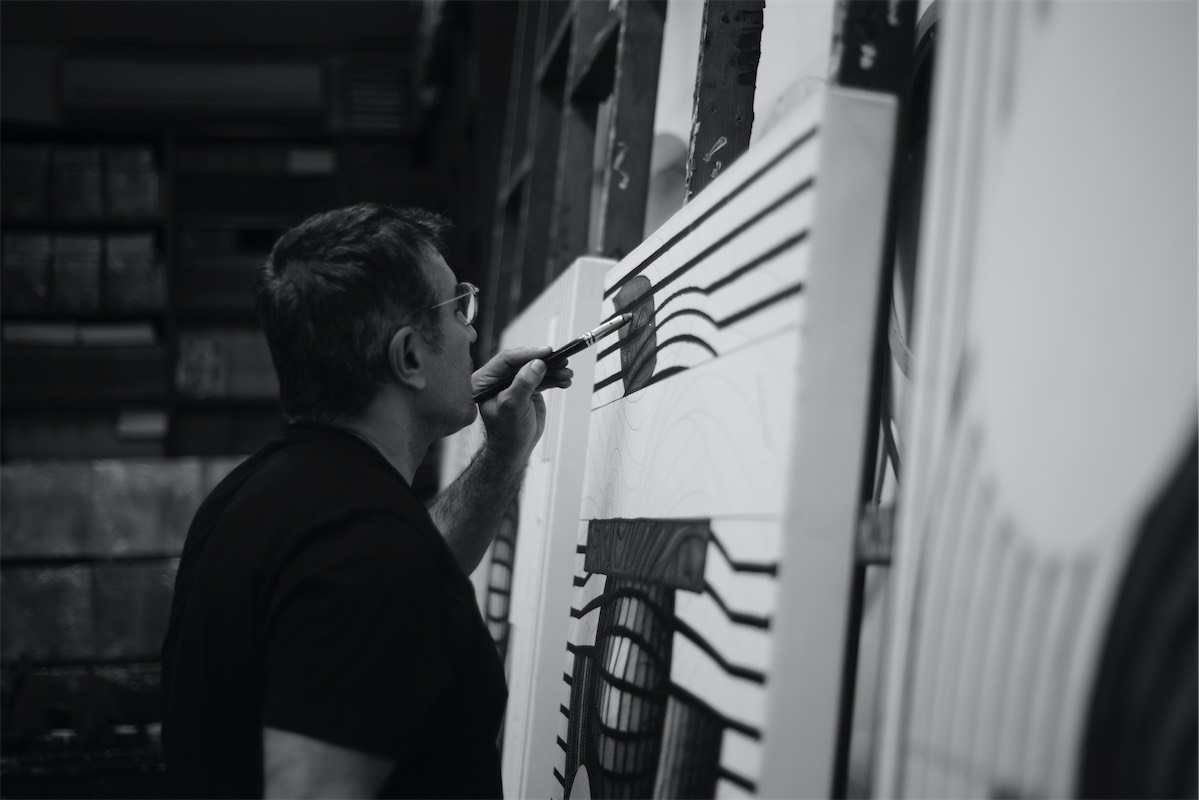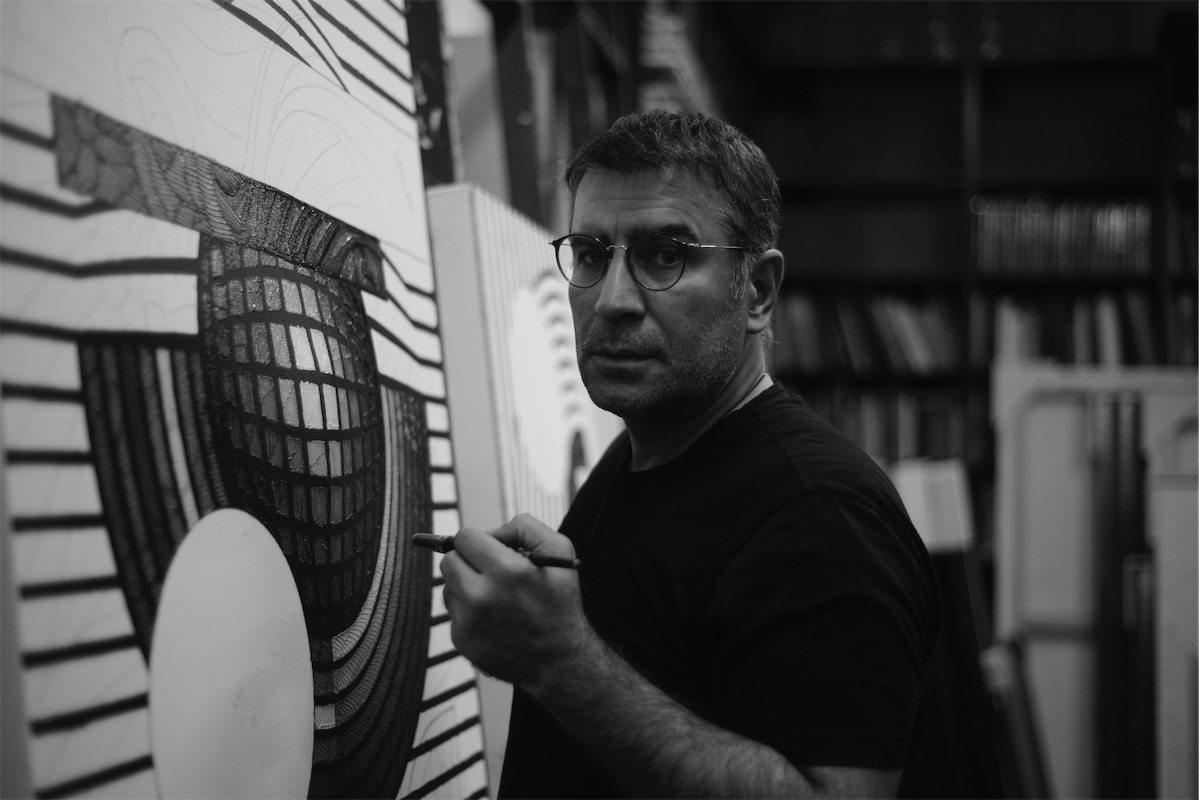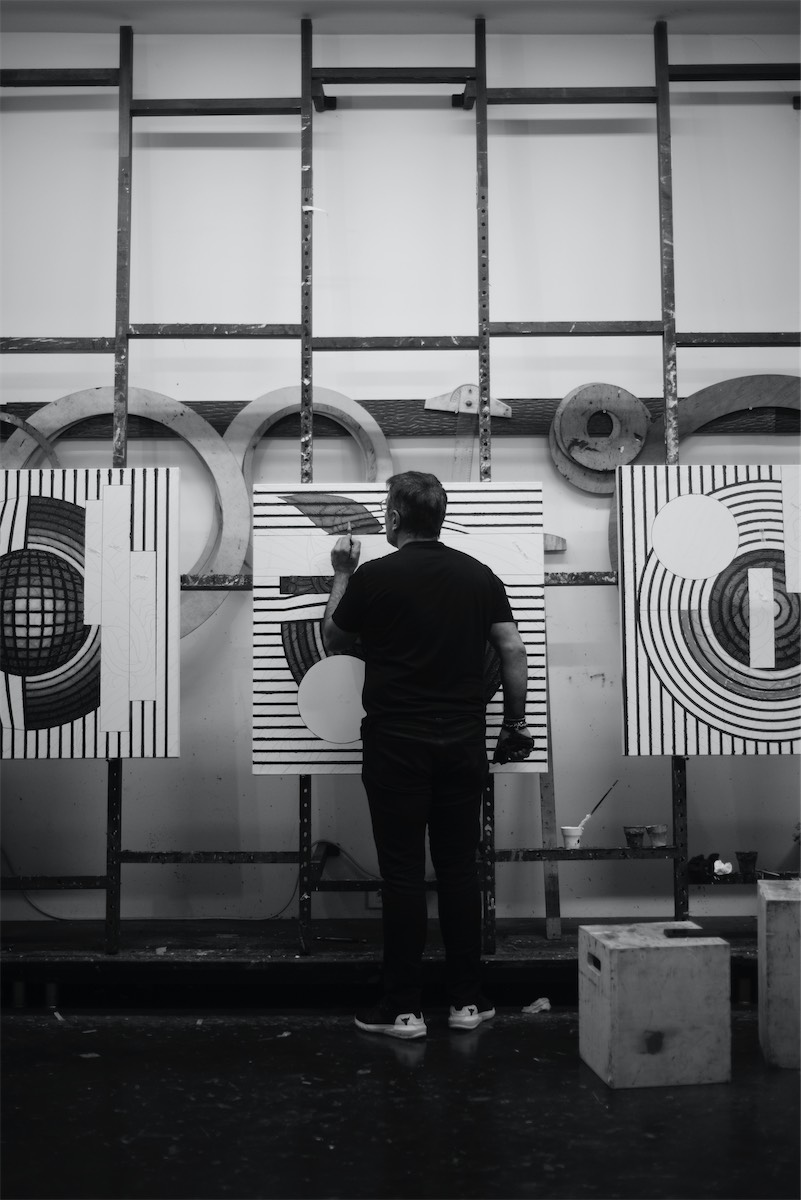1966—Ahmet Güneştekin was born in Batman. Already in his early childhood, he experienced the sonic atmosphere created by dengbêjs when they tell stories and sing. He was affected by their narrative act performed through continuous repetition of sounds and words. He became familiar with mythological themes and began painting at an earlier age.
1997—He moved to Istanbul where he currently resides. In his first atelier in Beyoğlu, he began experimenting with production techniques to explore ways of relating to forms, materials and surfaces. His experiments relied heavily on the findings of his ethnographic research across the country lasted almost a decade.
2003—His first solo exhibition, The Colours After Darkness, revealed his attempt to combine mythological themes with contemporary elements and structures. Tracing and animating the tales and sounds of his childhood in his field research has defined his art.
2005—In his documentary film series Güneşin İzinde, he investigated traditional practices which construct the sphere of material culture and generate contemporary forms. The series drew its material from the photographic and cinematic images he produced during his fieldwork. His research involved opening joint exhibitions with local artists and leading art workshops for children. Over ten thousand children attended these workshops during the research period.
2010—He founded Güneştekin Art Centre in Beyoğlu, where his studio still locates. He began working with a variety of media such as video, installation, painting, and sculpture. He pursued a multi-disciplinary approach that would continue throughout his career.
2012—His works in Encounter presented memories enmeshed with history, which disrupted its narratives, thus acted as counter-memory. The exhibition earned him recognition in the Istanbul art scene.
2013—He was first introduced to international audiences through his video installations in Momentum of Memory in Venice. He explored how the phenomenology of video intersects with contemporary politics of memory and showed how the medium works to produce counter-images to official historical narratives. Marlborough Gallery began representing his works throughout the world.
2014—His works displayed at Marlborough Gallery in New York were almost sculptural with their modulations of colour and intricate, detailed layers of lines that cause the painted forms to emerge from the canvas. His use of mythological elements coalesced with his treatment of objects, such as combining convex mirrors and metal cages with optical illusions, geometric abstractions, and colour gradients.
2015—Million Stone exhibited at La Pietà evinced the historical concerns and formal tendencies in his installations and sculptures. His works offered previously silenced stories about the past while subjecting the conventional modes of narrative and historiography to critical scrutiny.
2017—His exhibition Sun Road at the Galerie Michael Schultz in Berlin brought together his artistic production spanning a decade featuring selected pieces from his archive. His use of materials expanded to include intervening on fabric to explore the nature of mythologies and manipulating everyday items as the material embodiment of lived experiences. In his installation Never There, he reconstructed a ruin by arranging found objects on top of each other to evoke memories, and in his video Decay, he employed cinematic means to resuscitate memories of war, conflict, and confrontation.
2018—In Chamber of Immortality, he explored the semantic and morphological extent of the discoveries excavated at Göbekli Tepe. The installation clearly showed how he integrated the tales and sounds of his childhood into his artistic language. The survey exhibition Reflection and Resumption in Pécs presented his odyssey through the idea of optical illusions within op-art.
2019—Bank Austria Kunstforum Wien provided a showcase for his installations devoted to the culture of remembering and reminiscence through everyday objects. His works in The Alphabet of Memory emphasized the modes of relations built on conflict, negation, and antagonism. The exhibition displayed in Baku suggested a move towards the possibilities of new ethics and politics of life.
2020—Memory Chamber by Pilevneli Project brought together his works from diverse media, displaying his imaginative use of reminiscent objects and his modes of producing and arranging materials. The exhibition probed memory politics and focused on how he intertwined the personal and mundane with political and social phenomena.
2021— The artist has reimagined the selection of the Memory Chamber (Keci Burcu) with works that form a field of cultural memory that intervenes with historiography. Through his singular videos and installations, he explored the forms of artistic recollection and demonstrated that cultural memory is an activity occurring in the present in which the past is continuously modified and redescribed even as it continues to shape the future. The artist began sculpting with the notion of bringing tradition to the present, using the forms of circular structures as well as merging these structures with mythological components. He imagined his own version of the natural world, his own natural geometry, to study its irregular and fragmented, complex and eternal patterns. The works that represent his vision of this fragmented world were shown at AWC Dubai.
2022— By carving natural stone formations and metal, he began creating works with depth and volume that maintain a sense of weightlessness in sculptural space. His sculptures were presented in Infidel Quarter together with the artist’s installations of objects and videos focused on the history of migration and displacement in the context of population exchange. Presented by the Gunestekin Foundation, the show contributed to the understanding of the historical, cultural, and political effects of being human by engaging with different forms of humanism. Through a multidisciplinary, synchronic, and diachronic study, it opened new possibilities for discovering past events from the perspective of alterity.





